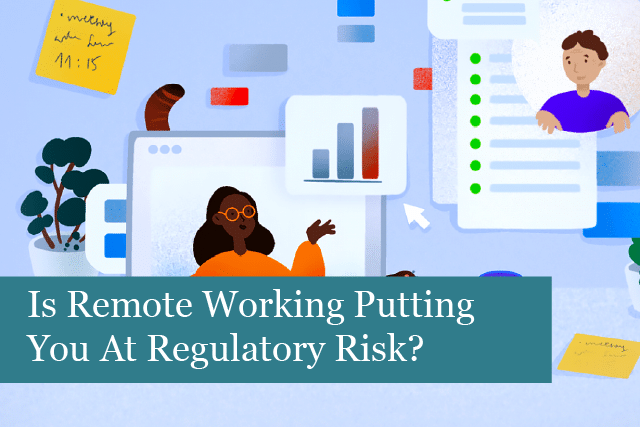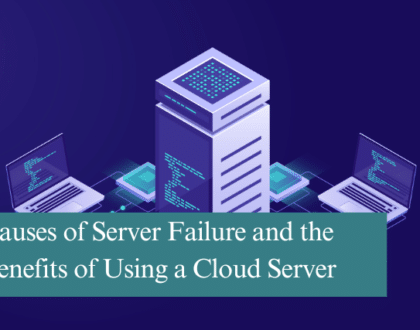
Businesses in the financial industry are becoming more aware that running the business with a mix of on-site and remote workers can be putting them in jeopardy. The issue has to do with regulatory compliance and the need for enhanced security.
At this point, the start of a new year, it’s become evident that businesses in this sector must continue to work with this hybrid model. How can your business move forward with this new model, while meeting regulatory compliance and security requirements?
We’ve put together some tips on how your compliance team can make sure they have the right approach to regulatory compliance.
Steps to Stay Compliant in These Challenging Times
Staying compliant is a challenge when employees are working partially from the office and partially at home. How on earth is it possible to ensure they are following security rules?
1). Create & Communicate Clear Processes
The first step in ensuring compliance both remotely and locally is to create clear processes. The next step is to ensure everyone understand the rules. This means the rules should be written in such a way that each employee understands them.
All processes need to be clearly defined, including identification of the start and ending points of the process. All triggers also need to be identified and established.
Next, all processes need to be organized. This means that inputs, activities, and more will need to be specifically clarified. Remember, the goal is to make this understandable by everyone. With that goal in mind, all processes, inputs, activities, and triggers need to be laid out clearly.
Once all the processes have been compiled and organized, the next step is to transcribe the process. The method used to transcribe a company’s processes may vary depending on industry. However, this is an essential step. Every employee must have the transcribed processes to refer to. This means you may need to write each process up, use visuals such as flowcharts, and more.
2). Make Sure Each Employee Understands the Rules
In this step, it’s necessary to ensure all employees understand the compliance rules and processes. Here, it may be a good idea to consider running regular training sessions at intervals that work for your business.
The goal is to ensure that all employees understand the rules and the processes. Only in this way can you ensure everyone has the knowledge to stay compliant, while improving overall security of the company.
3). Improve Security
Compliance teams have to deal with more than financial regulations; they must also deal with employees working remotely. That means data needs to be secured.
Each day cyberattacks are increasing in number and complexity. One of the weakest links in your company’s security is employees.
This is where it’s important to consider how communications and documents are shared in the company. You’ll also need to consider what types of data may be included in those materials. For instance, do they contain confidential company data, or information that’s specifically identifiable for clients? These are considerations that are essential if you have the goal of improving security with remote workers.
4). What About Automation?
Automation is another way to make your team more productive, whether they work on-site or remotely. Not only that, but automation can also work to make your company compliant without additional work.
If you haven’t yet adopted automation of certain processes, now’s the best time to implement these changes. Each step can be set up and built into your current system. Not only will this make processes easier, but you’ll also meet record-keeping requirements, and more.
5). Employees at Risk & Struggling
The steps outlined above make it easier to by-pass some of the common compliance issues many companies must deal with. However, what about employee risk with enforced lockdowns?
When employees aren’t used to working remotely it can take a huge toll on them. Stress is a huge problem when everyone is isolated for lengthy periods. Can your managers spot when an employee is having trouble and struggling with remote work?
What happens if someone doesn’t show up for work remotely? What if an employee is making questionable decisions? Will anyone know if an employee is making any security violations? These and other issues need to be addressed. The more employees are isolated and forced to work on their own, the more chances for security breaches increase.
Video chats make is more challenging to discern if someone is struggling or not. As humans, we’re clued in by different behaviors and body language. So, without these clues, managers must step up their game and become more empathetic, develop a more tolerant attitude, as well as listen to employees. Speaking up is the new part of company culture.
Employees who are struggling may make mistakes that can put your business at risk. Not only that, but the wellbeing of employees is also essential to keeping a business productive at challenging times.
6). Compliance Not Only for Security
Another important aspect of all of this is that compliance is not only for reasons of security. Compliance includes staying inside the legal and ethical boundaries of compliance requirements. However, this is a challenge in these uncertain times.
Many companies have found it necessary to be more flexible when it comes to compliance issues. While that’s necessary, compliance teams need to ensure their companies are allowed the flexibility they need without overstepping regulations.
For these reasons, compliance teams need to be more vigilant, rather than lax, when it comes to monitoring company compliance. Any red flags should be immediately evaluated, such as employees who don’t “show up” or who try to avoid calls, and more. Monitoring for unethical behavior is more important, rather than growing lax.
Management of remote employees and regulatory issues are making things more challenging. However, with clear processes, training, and fair treatment employees will feel cared for. Not only does this make them more loyal and productive, but it also works to improve a company’s overall security and compliance. This is the case even now, during the challenging times we’re all facing.
Recommended Posts

The Importance of Planning in Business IT Solutions
11th April 2025


